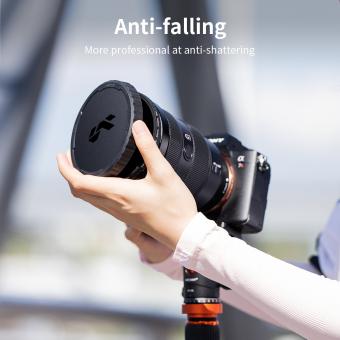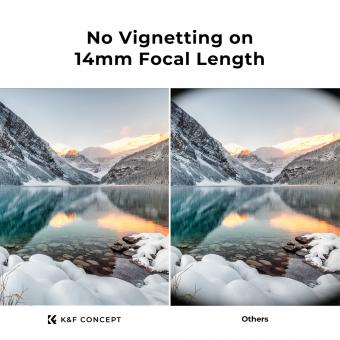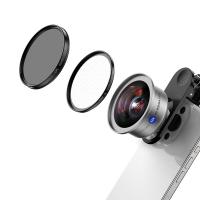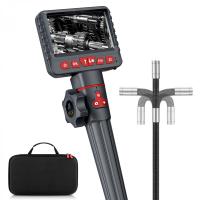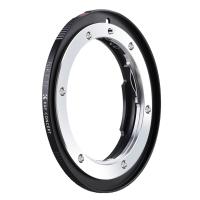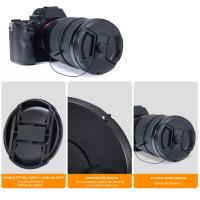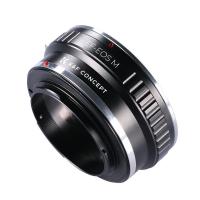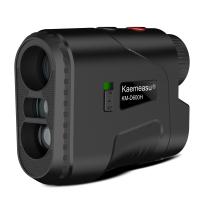What Do Camera Lens Filters Do ?
Camera lens filters are accessories that are attached to the front of a camera lens to modify or enhance the image being captured. They serve various purposes, such as improving image quality, reducing glare, and adding creative effects. Filters can be made of glass or plastic and come in different types, each with its specific function. For instance, UV filters are commonly used to protect the lens from scratches, dust, and moisture, while also reducing the bluish cast that can occur in outdoor photography. Polarizing filters help to reduce reflections and enhance color saturation, particularly in landscapes and outdoor scenes. Neutral density filters are used to reduce the amount of light entering the lens, allowing for longer exposures or wider apertures in bright conditions. Additionally, there are filters designed for specific purposes, such as color correction filters for balancing color temperature or special effects filters for creating unique artistic effects.
1、 Light Control: Filters adjust the amount and quality of light.
Camera lens filters play a crucial role in photography by enhancing the quality of images and allowing photographers to have more control over light. One of the primary functions of camera lens filters is light control. Filters adjust the amount and quality of light that enters the camera, resulting in improved exposure and color accuracy.
Light control filters come in various types, each serving a specific purpose. Neutral density (ND) filters, for example, reduce the amount of light entering the camera without affecting the color balance. These filters are particularly useful in situations where there is too much light, such as when shooting in bright sunlight or capturing long-exposure shots. By reducing the light, ND filters allow photographers to use slower shutter speeds or wider apertures, resulting in creative effects like motion blur or shallow depth of field.
Polarizing filters are another type of light control filter that selectively blocks certain polarized light waves. These filters are commonly used to reduce glare and reflections from non-metallic surfaces such as water or glass. By eliminating unwanted reflections, polarizing filters enhance color saturation and contrast, resulting in more vibrant and detailed images.
In addition to light control, camera lens filters can also serve other purposes. For instance, UV filters are primarily used to protect the camera lens from scratches, dust, and moisture. While the necessity of UV filters is debated among photographers, they can be beneficial in certain situations, such as shooting in harsh environments.
It is worth noting that with advancements in digital photography and post-processing software, some of the effects achieved through lens filters can be replicated in editing. However, using filters directly on the lens during photography often produces more natural and desirable results, saving time and effort in post-processing.
In conclusion, camera lens filters, particularly those focused on light control, allow photographers to adjust the amount and quality of light entering the camera. These filters enhance exposure, color accuracy, and creative possibilities, enabling photographers to capture stunning images with greater control and precision.

2、 Color Correction: Filters correct color imbalances and enhance tones.
Camera lens filters are essential tools for photographers and videographers as they serve various purposes to enhance the quality and creativity of their work. One of the primary functions of camera lens filters is color correction. Filters are designed to correct color imbalances and enhance tones, ensuring accurate and vibrant color reproduction in photographs and videos.
Color correction filters are particularly useful in situations where the lighting conditions may introduce unwanted color casts or tints. For example, when shooting under fluorescent lighting, which tends to have a greenish hue, a magenta filter can be used to counterbalance the green and produce more natural-looking colors. Similarly, when shooting during sunset or sunrise, a warm-toned filter can intensify the golden hues and create a more dramatic effect.
In addition to correcting color imbalances, filters can also be used creatively to manipulate colors and create specific moods or atmospheres. For instance, a polarizing filter can deepen the blue of the sky and enhance the contrast between clouds and the sky, resulting in more striking landscape photographs. Similarly, a graduated neutral density filter can help balance the exposure between a bright sky and a darker foreground, allowing for a more evenly exposed image.
It is worth noting that with advancements in digital post-processing software, some photographers argue that the need for physical color correction filters has diminished. They argue that color correction can be achieved effectively in post-production, allowing for more flexibility and control. However, many photographers still prefer to use filters during the shooting process to achieve the desired results in-camera, reducing the need for extensive post-processing.
In conclusion, camera lens filters play a crucial role in color correction by correcting imbalances and enhancing tones. While the use of filters may vary depending on personal preferences and advancements in post-processing technology, they remain valuable tools for photographers seeking to achieve accurate and creative color reproduction in their work.
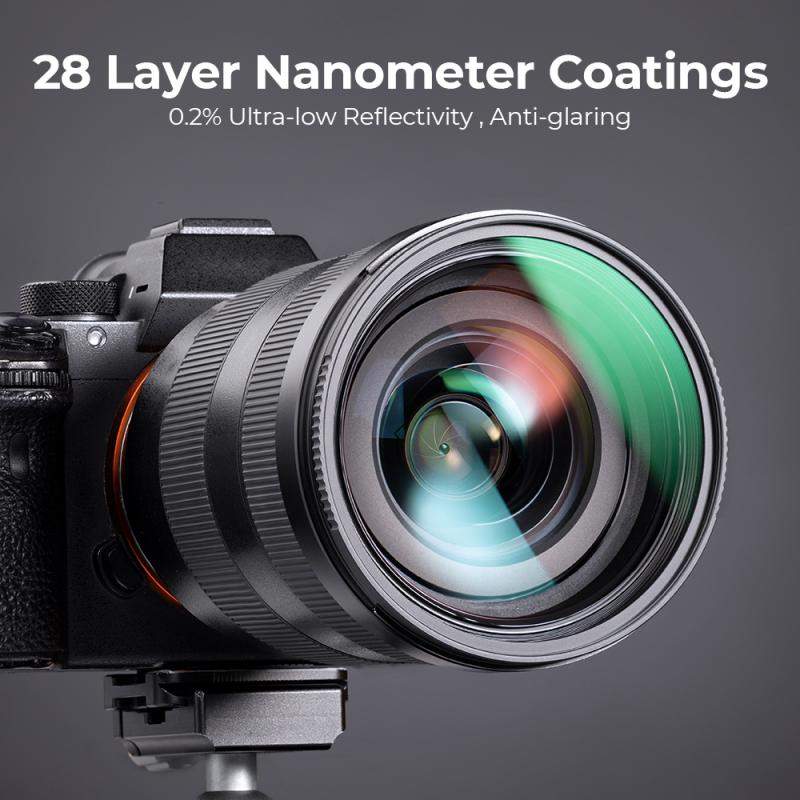
3、 Special Effects: Filters create artistic effects like blurring or distortion.
Camera lens filters are accessories that are placed in front of the camera lens to modify the way light enters the camera. They serve various purposes, but one of the main functions of camera lens filters is to enhance the quality of the images captured.
One of the most common uses of camera lens filters is to control the amount of light that enters the camera. Neutral density filters, for example, reduce the amount of light that reaches the camera's sensor, allowing photographers to use slower shutter speeds or wider apertures in bright conditions. This is particularly useful in situations where a photographer wants to achieve a shallow depth of field or capture motion blur.
Another important function of camera lens filters is to correct color imbalances or enhance certain colors. For instance, a polarizing filter can reduce reflections and glare from non-metallic surfaces, resulting in more saturated colors and increased contrast. Similarly, color filters can be used to add warmth or coolness to an image, depending on the desired effect.
Camera lens filters also play a crucial role in protecting the lens from potential damage. UV filters, for example, block ultraviolet light and serve as a protective layer against scratches, dust, and moisture. This can be particularly beneficial in outdoor photography where the lens is exposed to harsh weather conditions.
In addition to their practical uses, camera lens filters also offer creative opportunities for photographers. Special effects filters, such as soft focus or diffusion filters, can be used to create dreamy or ethereal images. Filters like star filters can add a sparkling effect to light sources, while fisheye or wide-angle filters can distort the perspective and create unique visual effects.
In recent years, with the rise of digital photography and post-processing software, some argue that the need for camera lens filters has diminished. While it is true that many filter effects can be replicated in post-production, using filters directly on the lens can save time and effort during the editing process. Additionally, certain effects, such as polarizing or neutral density filters, are difficult to replicate digitally and are best achieved in-camera.
In conclusion, camera lens filters serve multiple purposes, from controlling light and correcting colors to protecting the lens and creating artistic effects. While the digital age has brought new possibilities for image manipulation, camera lens filters continue to be valuable tools for photographers, offering convenience and unique effects that cannot always be replicated in post-processing.

4、 UV Protection: Filters block harmful ultraviolet rays from reaching the lens.
Camera lens filters serve multiple purposes, but one of the most common and important functions is UV protection. UV filters are designed to block harmful ultraviolet rays from reaching the lens of the camera. These filters are transparent and do not affect the overall image quality or color balance.
UV rays are invisible to the human eye but can have a significant impact on photographs. They can cause hazy and washed-out images, especially in landscapes and outdoor shots. UV filters act as a barrier, preventing these rays from entering the lens and affecting the image quality.
In addition to protecting the lens, UV filters also offer other benefits. They can act as a shield against dust, moisture, and scratches, providing an extra layer of protection for the lens. This is particularly useful in outdoor photography where the lens is exposed to various elements.
However, it is worth noting that the necessity of UV filters has been a topic of debate among photographers in recent years. With advancements in lens coatings and digital sensors, the impact of UV rays on image quality has become less significant. Some argue that using a UV filter can introduce additional flare or reduce sharpness, especially when using high-quality lenses.
Ultimately, the decision to use a UV filter depends on personal preference and shooting conditions. If you frequently shoot in harsh environments or want to provide extra protection for your lens, a UV filter can be a valuable accessory. However, if you prioritize maximum image quality and are shooting in controlled conditions, you may choose to forgo using a UV filter.




